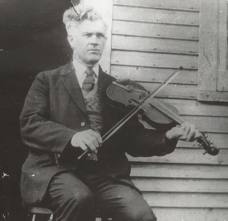Annotation:Quadrille indien: Difference between revisions
Alan Snyder (talk | contribs) (Fix citation) |
No edit summary |
||
| Line 21: | Line 21: | ||
<font color=teal> | <font color=teal> | ||
Folkways FG 3531, Jean Carignan "Old Time Fiddle Tunes" (1968). | Folkways FG 3531, Jean Carignan "Old Time Fiddle Tunes" (1968). | ||
Folkways FD 6530, Old Grey Goose - "Maine Country Dance Music and Song" (1980). | |||
Fretless 132, "Ron West: Vermont Fiddler." | Fretless 132, "Ron West: Vermont Fiddler." | ||
Victor 263531 (78 RPM), Joseph Allard (1928). | Victor 263531 (78 RPM), Joseph Allard (1928). | ||
Revision as of 01:22, 10 December 2017
Back to Quadrille indien
QUADRILLE INDIAN (Quadrille indien). AKA and see "Reel des skieurs," “Indian (The),” "Indian Reel." French Canadian (originally), American; Reel. USA, New England. G Major ('A' part) & C Major ('B' part). Standard tuning (fiddle). AABB (Miller & Perron, Page, Songer): AA'BB' (Bégin). The reel was recorded by Quebec fiddler Joseph Allard [1] (1873–1947) in 1928 in Montreal. It was picked up by American contra dance musicians via Ralph Page [2] (1903–1985), who used it for his New England dances.

Source for notated version: Jeff “Smokey” McKeen fo the Maine Band The Grey Goose, via Deborah Lindsay (Portland, Oregon) [Songer]; fiddler Dawson Girdwood (Perth, Ottawa Valley, Ontario) [Bégin].
Printed sources: Bégin (Fiddle Music in the Ottawa Valley: Dawson Girdwood), 1985; No. 52, p. 61. Carlin (Master Collection), 1984; No. 94, p. 60. Cuillerier (Joseph Allard), 1992; pg. 24. Miller & Perron (New England Fiddler's Repertoire), 1983; No. 143 (appears as "Indian Reel"). Page (Ralph Page Book of Contras), 1969; p. 15 (appears as "Indian Reel"). Songer (Portland Collection), 1997; p. 106 (appears as “The Indian”).
Recorded sources:
Folkways FG 3531, Jean Carignan "Old Time Fiddle Tunes" (1968).
Folkways FD 6530, Old Grey Goose - "Maine Country Dance Music and Song" (1980).
Fretless 132, "Ron West: Vermont Fiddler."
Victor 263531 (78 RPM), Joseph Allard (1928).
See also listing at:
Hear Joseph Allard's 1928 recording at the Virtual Gramophone [3]
